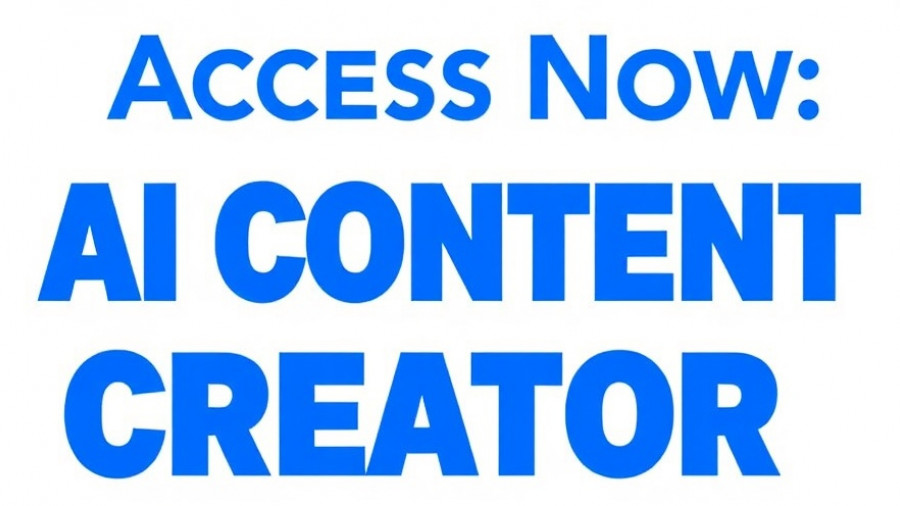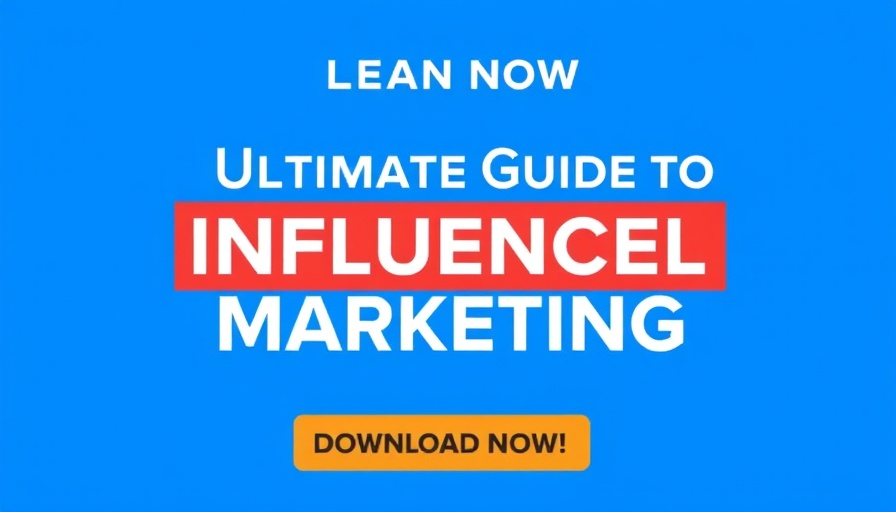
Unlocking the Potential of Enterprise Generative AI Tools
Generative AI is transforming the landscape of modern business, particularly in areas such as marketing, sales, and customer service. While tools like ChatGPT have showcased firsthand what AI can achieve for individual users, the challenge lies in seamlessly integrating these capabilities into enterprise environments. For digital marketers, agencies, and small to medium-sized businesses (SMBs), understanding how to leverage these tools effectively is essential for staying competitive in today’s fast-paced digital landscape.
Understanding Generative AI in Enterprise
At its core, generative AI encompasses advanced software solutions designed to automate and enhance workflows on a grand scale. According to recent findings, the best generative AI tools integrate deeply with customer relationship management (CRM) platforms, ensuring a unified approach to data management and utilization. The addition of governance controls fortifies the security and compliance needs of enterprises, addressing common concerns around data privacy and accuracy.
For instance, organizations are discovering that generative AI tools can facilitate tasks from content generation to personalized marketing efforts. By aligning AI applications with actual customer data, business leaders can create bespoke experiences that resonate more effectively with their audiences. As emphasized in various reports, the gap between consumer and enterprise AI tools centers not merely on capabilities but on the ability to deliver measurable business outcomes based on integrated systems.
Real-World Applications of Generative AI
Leading organizations are deploying generative AI across various verticals. Here are some notable use cases:
- Content Generation at Scale: Marketing teams utilize generative AI to produce blog posts, social media content, and email campaigns that adhere to brand voice while engaging diverse audience segments. Integration with CRM allows for personalized content based on actual customer interactions.
- Personalized Messaging: Dynamic content creation becomes possible as generative AI analyzes user behavior and interaction history. This enables truly tailored campaigns that are adaptive rather than generic, significantly enhancing engagement rates.
- SEO Optimization: Advanced tools efficiently find and fill content gaps while optimizing for search visibility, addressing specific queries that target accounts are searching for. This not only improves lead generation but enhances overall content effectiveness.
The Importance of Integration and Governance
As revealed in research, integrating generative AI tools into existing enterprise systems is fraught with challenges. A common theme among industry reports emphasizes the importance of a structured implementation strategy. Organizations are advised to prioritize a clear rollout plan, aligning teams and employing a selection matrix to compare different vendor offerings effectively.
It's informative to note that generative AI applications often require robust integration with systems such as enterprise resource planning (ERP) and other data analytics platforms. This is crucial to ensure data accuracy and flow, thereby enhancing operational efficiency.
Elevating the Value of Marketing Automation
For marketing professionals looking to streamline sales funnels and improve lead generation, the application of generative AI tools can be groundbreaking. As companies delve deeper into AI possibilities, their ability to deliver closer connections with customers while preserving data governance will distinguish leading organizations from their competitors. Marketing automation technologies bring together disparate elements into cohesive, automated workflows, proving invaluable in rapidly changing market conditions.
However, it’s also important to recognize challenges arising from automated systems. Concerns around data security, particularly when using consumer-level AI like ChatGPT, need to be addressed strategically. Enterprises must ensure role-based access controls to maintain compliance and protect sensitive information.
Conclusion: Preparing for AI in Your Business
To fully unlock the potential of generative AI within the enterprise context, organizations must focus on fostering a culture of innovation and adaptability. By employing a balanced approach that combines effective integration, governance models, and continuous training, businesses can ensure they are not only ready to implement AI tools but also optimized to benefit from them long-term. As the realm of AI technologies evolves, the possibilities for enhanced client acquisition and engagement will expand, promising a transformative journey for those who embrace it.
To explore deeper insights, case studies, and expert advice tailored to enhance your enterprise’s approach to generative AI, consider downloading our comprehensive guide today.
 Add Row
Add Row  Add
Add 




Write A Comment